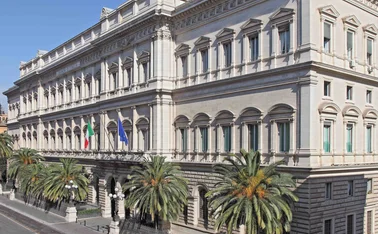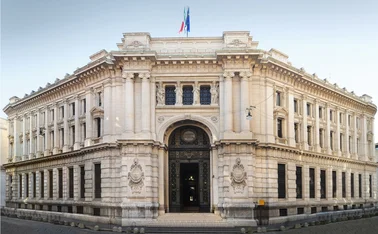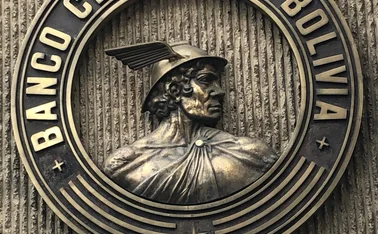
The ultimate store of value
Róbert Rékási speaks to Central Banking about how Covid-19 has changed gold investment trends

Central banks became net gold buyers in 2010, three years after the financial crisis. In response to Covid-19, major central banks have doubled down on unconventional policy measures, which have further depressed yields. In this context, do you expect gold to become increasingly attractive for reserve managers?
Gold remains an attractive asset class for reserve managers. Amid the uncertainties created by Covid-19, gold is acting as a ‘safe-haven asset’, which is reflected in higher gold prices. The other important consideration is the opportunity cost. Because of the crisis, central banks eased policies further and fiscal policies followed suit. In this context, the opportunity cost of holding gold has decreased further.
Gold allocations as a share of total reserves have increased substantially over the past decade due to an increase in purchases. Have gold purchases reached their ceiling and will this stem demand?
I do not think we are approaching this ceiling. First, recent surveys have revealed central banks are still willing to increase their gold exposures. Second, the drivers boosting the gold price are very powerful. The low and negative sovereign yield environment is very supportive. Geopolitical and global trade tensions also boost the gold price. For example, growing competition between China and the US is a long-term factor that will not go away after the pandemic or with a new US administration. Third, central banks in different regions look at gold in a different way than before the financial crisis. A very obvious sign of this was the termination of the Washington Agreement on Gold in 2019.
Exchange-traded funds (ETFs) have allowed the creation of a more liquid gold market. This development has been credited with contributing to higher prices over recent years. From a central banking perspective, has this development affected gold’s assessment as a reserve asset?
For reserve managers there is a basic triangle. We need liquid assets, safe assets, and we should avoid losses on them. This is very challenging to achieve in this low and negative environment, and to balance these three goals. In this context, liquidity is extremely important for central banks. Nonetheless, our approach to gold and ETFs is a little different to that of other investors. On the one hand, liquidity in gold markets is welcome and it has improved over recent years. But most central banks usually do not buy ETF products to gain exposure to gold, instead buying through the over-the-counter market. In the case of gold-producing countries, central banks buy gold from the national producers. Another important point separating reserve managers from other gold investors is that we do not normally trade gold on a daily basis. As a result, daily liquidity is less important.
In spite of sustained price increases and higher liquidity, the market has recorded high volatility over the past two years. In fact, since August, it has recorded a significant correction. To what extent can price volatility deter central banks considering a reconfiguration of their portfolios?
First, we should decide the way in which we look at gold through a proper evaluation of costs and benefits of holding gold reserves on a standalone basis. In my view, gold is a strategic asset that has room in foreign exchange reserves. From this perspective, the volatility of the gold price is only one of many factors to consider. The volatility stemming from the gold exposure should also be examined through the share of gold holdings and the correlation gold has with other assets in the reserves portfolio. You should consider the downside risk pressures stemming from other asset classes during periods of stress, when reserve managers need to deploy their reserves. This would usually require a scenario analysis to discover gold’s behaviour compared with that of other asset classes.

Róbert Rékási has been head of foreign exchange reserves management at the Central Bank of Hungary since 2013. Having joined in 2001, he has a 19-year career at the central bank, previously working as a portfolio manager. Rékási has been a chartered financial analyst (CFA) since 2008, and has been president of the CFA Society Hungary since 2016. He graduated with a degree in finance from Corvinus University in Budapest.
Over the past few years, gold has been praised as a source of protection from negative rates. However, its price has tended to move in tandem with other recently adopted reserve assets such as equities. Could this correlation diminish gold’s allure among reserve managers looking for higher diversification?
Looking at the structure of reserves globally, approximately two-thirds of central banks hold gold; only 25% of them invest in equities. Not every central bank considers the relationship between equities and gold. But I believe there are some common drivers between the price movements of gold and equities. But gold is a ‘two-faced’ asset. It’s true that central banks’ asset purchases ultimately boost equity prices during times of stress. We have seen that happening this year. But, in more conventional scenarios, gold tends to rise during crises as a safe-haven asset, offsetting losses you may record on riskier assets. And, more importantly, in contrast to equities, gold’s strength through economic turmoil is not dependent on central banking policies. It’s a much more reliable source of strength in crises.
A relatively small group of central banks – Russia, China and Turkey being the main players – have led gold purchases since the financial crisis. To what extent have their operations been aimed to reduce their exposures to the US dollar, and the effectiveness of US sanctions on their economies?
This goes beyond the traditional reason of holding gold reserves, and portfolio optimisation too. I am certain tensions between the US and China may have contributed to higher gold holdings in China and other countries with difficult bilateral relations with Washington, such as Turkey.
What is especially relevant in this regard is that gold is a very good source of liquidity for US dollars. We live in a dollar-centric global monetary system, and dollar access remains key for every single country. In this regard, reducing US Treasury holdings – while boosting gold – may reduce your immediate exposure to US actions, but still guarantees that, when needed, gold will allow you to raise dollars in the market.
The Central Bank of Hungary sharply increased gold holdings over the last decade to 31.5 tonnes. In June 2020, total reserves stood at €30.2 billion, and the current market value of its gold holdings is in excess of €2.1 billion, more than 5% of the portfolio’s value. What has been the rationale behind these purchases?
It was a long-term national and economic policy strategy decision to increase the size of our gold holdings. The decision was driven by stability objectives; there were no investment considerations behind holding gold reserves. In normal circumstances, gold has a confidence-building feature, so it may play a stabilising role and act as a major line of defence under extreme market conditions, in times of structural changes in the international financial system or during deep geopolitical crises. The central bank also decided to repatriate overseas gold holdings. Holding precious metals within the country is consistent with international trends, enhances financial stability and may strengthen market confidence in the Hungarian economy.
An alternative is to hold part of your holdings in major financial and gold trading centres such as London, New York or Switzerland. This is useful in terms of liquidity as you can lend gold through swap agreements in return for US dollars. It can also enhance returns, but this obviously depends on the specific objectives of central banks.
Poland has also followed a similar approach to boosting gold reserves and repatriating them. Do you think the negative rate environment in the eurozone makes gold more interesting for European Union member states that are not part of the eurozone, but have important exposures to the euro?
As mentioned, it was not the main consideration behind increasing the gold reserves of Hungary. Although, if we consider gold investments from a different angle, this is also a factor to bear in mind. If you don’t buy gold, will you buy more expensive German government Bunds? The negative interest rate environment can play a crucial role in many reserve managers’ minds. Non-eurozone member states, because of their economic ties, must keep some part of their reserves in euro. The question is to what extent: how much loss can these central banks bear year on year?
In August, central banks became net sellers of gold for the first time in 18 months. This was mainly the result of muted purchases, and large sales by one country. Uzbekistan reduced its gold reserves by almost 32 tonnes, thought to be connected to overall difficulties in financing the government’s response to the Covid-19 crisis. To what extent can we expect more countries using their gold portfolios to access hard currency in the months ahead?
I would stress once more that gold is a strategic asset. I do not see central banks starting to reduce their holdings significantly. However, some gold-producing countries can adopt this strategy, and Uzbekistan is an important producer. It is an interesting case; up to a point, you could compare it with Norway. Where the Scandinavians leverage oil resources to accumulate reserves and public assets, Uzbekistan has gold-mining activities it can exploit in a similar fashion. Very likely, the state is involved in the gold-mining industry, and the central bank acquires part of the production, which, in some circumstances, can be sold. If you consider the requirement for higher public spending because of Covid-19, it would make sense for them to engage in these operations. But, as a global trend, I do not see a meaningful number of reserve managers following them.
It is widely accepted that gold would thrive in a scenario of stagflation similar to that experienced in the second half of the 1970s. However, taking into account the current below-target medium-term inflation expectations, this seems unlikely. To what extent would you link the outlook for gold as a reserve asset with the evolution of inflation in the coming years?
I would not put too much emphasis on inflation in the short term. In theory, increasing global debt levels at some point could have an inflationary effect. But, in the current context, it is not an immediate threat. Changes to the market structure are more important than the inflation outlook for gold. In the last decade we saw how central banks became net gold buyers mainly because of the ultra-low-yield environment. The development of the ETFs market has boosted it even further. All of these moves took place in a context of subdued inflation. A bullish gold outlook does not depend on the world economy ending up in stagflation.
In August, the US Federal Reserve unveiled a new policy framework that will allow it to temporarily tolerate inflation above the 2% target. It announced in September that it will maintain the Fed funds rate at 0–0.25% through 2023. What repercussions do you expect this policy change to have on the gold market, and the thinking of reserve managers worldwide?
I think is very supportive for the gold market in the long run. Opportunity cost is an important driver of gold price, and yields do not look like they will be rising any time soon. The Fed is basically saying it will keep interest rates low for longer, at least until 2023. On the one hand, that is good for gold prices. On the other, it says it will allow inflation to temporarily be over the 2% target. Let us see whether that is possible but, if that happened, it would also support gold as a reserve asset. That is why I think the Fed’s new policy approach to average inflation targeting is so positive for gold.
So far during the Covid-19 crisis, emerging market currencies have remained stable as the reserve portfolios of their central banks. Could this indicate – alongside the weaker dollar fostered by a dovish Fed – gold’s role to hedge against currency depreciation has become less relevant for reserve managers?
In the 1980s and early 1990s, global reserves looked very different. Now portfolios are far larger. As a result, most emerging currencies are more stable than they used to be. Nevertheless, beyond the portfolio size, you need to consider asset allocations. In this respect, gold’s allocations remain unchanged or have even increased as portfolios have grown larger. Gold is a good hedge against inflation; it is the ultimate store of value. Even if economic fundamentals evolve, and requirements can vary from advanced to emerging economies, gold’s strengths remain.
This interview was conducted by Central Banking in October 2020
This feature forms part of the Central Banking focus report, Gold for central banking 2020
Further reading
Only users who have a paid subscription or are part of a corporate subscription are able to print or copy content.
To access these options, along with all other subscription benefits, please contact info@centralbanking.com or view our subscription options here: subscriptions.centralbanking.com/subscribe
You are currently unable to print this content. Please contact info@centralbanking.com to find out more.
You are currently unable to copy this content. Please contact info@centralbanking.com to find out more.
Copyright Infopro Digital Limited. All rights reserved.
As outlined in our terms and conditions, https://www.infopro-digital.com/terms-and-conditions/subscriptions/ (point 2.4), printing is limited to a single copy.
If you would like to purchase additional rights please email info@centralbanking.com test test test
Copyright Infopro Digital Limited. All rights reserved.
You may share this content using our article tools. As outlined in our terms and conditions, https://www.infopro-digital.com/terms-and-conditions/subscriptions/ (clause 2.4), an Authorised User may only make one copy of the materials for their own personal use. You must also comply with the restrictions in clause 2.5.
If you would like to purchase additional rights please email info@centralbanking.com test test test






